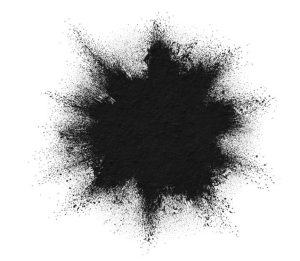
What are low structure and high structure pigment carbon black?
2024-03-07
Introduction
Pigment blacks are used in a wide range of industries including plastics, paints, coatings and inks. These carbon blacks are divided into two broad categories based on their structure: low structure and high structure. Understanding the differences between these two types is critical to selecting the carbon black best suited for a specific application.
Low structure pigment carbon black
Features
Low structure carbon black exhibits a randomly oriented, loose and fluffy structure. They have high surface area, low density and relatively low degree of graphitization. These carbon blacks are produced by the thermal decomposition of hydrocarbons at high temperatures in the absence of oxygen.
Application
Due to its high surface area, low-structure carbon black is particularly effective in reinforcing elastomers and plastics. They enhance the strength, toughness and wear resistance of these materials. Some common applications include:
*Tires and rubber products
* Auto parts
* Footwear components
* Electrical insulation
High structure pigment carbon black
Features
High structure carbon black has a highly ordered plate-like structure. They are characterized by low surface area, high density and high degree of graphitization. These carbon blacks are produced by controlled oxidation of low-structure carbon blacks or by direct synthesis from hydrocarbons at high temperatures in the presence of oxygen.
Application
The plate-like structure of high structure carbon black makes it an excellent light absorber and colorant. They have a wide range of applications including:
* Printing ink
*Paints and coatings
* Plastics and composites
* Conductive material
Comparison of low structure and high structure carbon black
The table below summarizes the main differences between low structure and high structure pigment carbon blacks:
| Features | Low Structure | High Structure |
|—|—|—|
| Structure | Loose and fluffy | Highly organized |
| Surface Area | High | Low |
| Density | Low | High |
| Graphitization | Low | High |
| Applications | Reinforcements, elastomers, plastics | Colorants, printing inks, coatings |
Market share and trends
The global pigment carbon black market was worth $13.5 billion in 2021 and is expected to reach $16.7 billion by 2028, according to market research firm Smithers. The market is expected to grow at a CAGR of 2.5% during the forecast period. This growth is driven by rising demand for carbon black from various end-use industries such as plastics, paints and coatings.
Case Study
Case Study 1
In the automotive industry, low-structure carbon black is used to reinforce tires to improve their strength, durability and fuel efficiency. For example, a leading tire manufacturer used low-structure carbon black in its high-performance tires, increasing tread life by 15 percent.
Case Study 2
In the printing industry, high-structure carbon black is used in offset printing inks to produce clear, vivid images. For example, a well-known printing company used high-structure carbon black in its black offset ink to increase contrast and resolution by 30%.
FAQ
**Q: What is the difference between low structure carbon black and high structure carbon black? **
**Answer:** Low structure carbon black has a loose and fluffy structure, while high structure carbon black has a highly ordered plate-like structure.
**Q: What type of carbon black is used in tires? **
**Answer:** Low structure carbon black is used in tires to strengthen the rubber and increase strength and durability.
**Q: What is the market size of the pigment carbon black industry? **
**A:** The global pigment carbon black market was valued at USD 13.5 billion in 2021 and is expected to reach USD 16.7 billion by 2028.
Conclusion
Low-structure and high-structure pigment carbon blacks play different roles in various industries. Understanding its unique characteristics and applications is critical to optimizing performance and achieving desired results. Whether reinforcing tires or producing vibrant printed images, carbon black remains an indispensable material in modern manufacturing.

 What are low structure and high structure pigment carbon black? " title="
What are low structure and high structure pigment carbon black? " title="